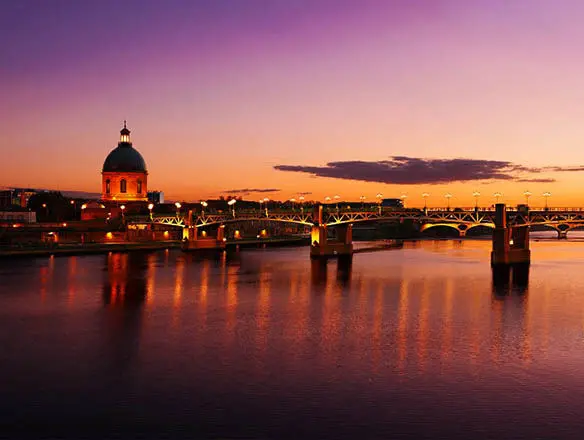
1. Welcome to Toulouse. Do you feel like discovering the "Pink City"?
Let's start discovering the city accompanied by this audioguide, with some geographical data. Toulouse is the capital of the department of Upper Garonne, and also of the Occitania region, in the south of France. It is located near the border with Spain, just 90km from the Pyrenees. It is divided by the Garonne River: did you know that the Garonne starts in Spain? It runs the southwest of France, flowing into the Atlantic at the city of Bordeaux whose audioguide is also available on our website.
Its urban area has just over 1.3 million inhabitants, and it is France’s fourth most populated city.
Toulouse is known as La Ville Rose, that is, the Pink City; can you guess why? You'll understand it right away if you look at the color of its building’s terracotta bricks at sunset.
With its feet on the ground and its heart in the sky, Toulouse promotes earthly pleasures while using its creativity in aeronautical knowledge. These are the two facets of this historic and at the same time cosmopolitan metropolis, which make it ideal for a short vacation.
Cheerful, bright and incredibly lively, Toulouse is for many people the most hedonistic city in our country. You just have to walk downtown to corroborate this: bustling streets, lively terraces full of people, bars open until late at night... Maybe it is because of the proximity to Spain that some of its customs have transferred. The fact is that its enjoyment of life, its savoir vivre, is captivating.
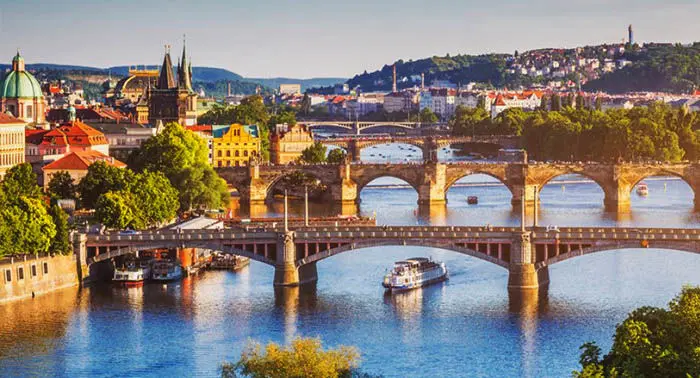
2. Some historical background
As always, it is difficult to summarize the city history in just a few lines, but to understand the origins and know how important Toulouse was in the past, we will make a brief chronological tour with this audioguide:
The history of the city begins in the first century with the presence of the Romans, who gave it the name of Tolosa. Back then it was the capital of the Visigoth kingdom in the V century and later, the capital of the Frankish kingdom of Aquitaine and of the County of Toulouse in the ninth century. As you can see, right from the beginning the city had a very important place.
In this French region, a new conception of Christianity developed around the Middle Ages, in disagreement with the one in Rome. The followers of this heresy, called Cathars, were persecuted and exterminated in very large numbers during the Inquisition. The final consequence of this religious war was the loss of the entire immense County of Toulouse, which in 1271, was annexed to the domains of King Philip III of France known as the Bold One. This was the biggest step towards building France as a united country.
With peace restored, the bourgeois enriched themselves, and the city experienced relative prosperity, slowed by plague epidemics and the Hundred Years' War. Then, from 1463 to 1560, Toulouse lived its golden century thanks to the trade of glastum, a plant from which a magnificent blue dye was extracted, later it declined because of the sector crisis and the creation of new pigments to dye textiles.
Certainly, it was the First World War (1914-1918) that fueled Toulouse’s industrial activity. This was because the main battle scenarios were located in northern France, so most of the industries settled in the south of the country. Endowed with good workmanship, an efficient transport network, and numerous raw materials, Toulouse benefited from, among other things, the creation of gunpowder factories. In 1917 it saw the birth of the Latécoère factory, which quickly turned to aircraft manufacturing.
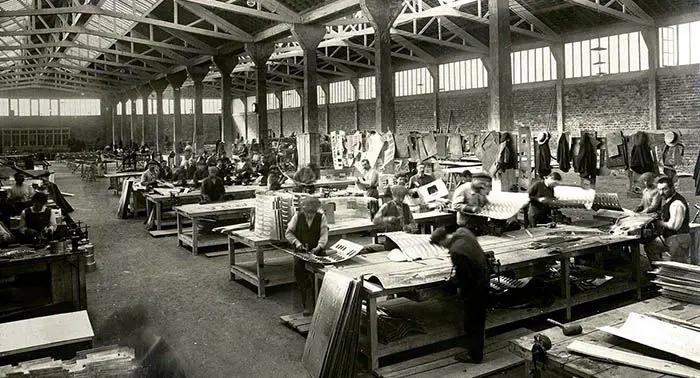
3. The Aviation Adventure
Toulouse history is also linked to human progress and creativity to overcome difficulties. Whether or not you love aeronautics, you will be fascinated by the history of aviation pioneers. Have you ever wondered how a century ago they managed to cross the desert, the Ocean and the Andes to deliver the mail by plane? Those pilots are honored at L’Envol des Pionniers (The Pioneers’ Takeoff), a museum opened in late 2018 next to the runway that saw the birth of this human feat. That spirit of creation and imagination is also present in the exhibition of show machines in the Hall of the Machine, which you can discover in another section of this audioguide.
Toulouse is known worldwide for its aerospace industry and this is because since 1917, it has hosted strategic industries such as aeronautics. It was the starting point of the first regular French airline. Numerous precursors of French aviation were established in Toulouse, including the engineer and inventor of the plane, Clément Ader; Pierre Latécoère, engineer and entrepreneur, founder of the Aéropostale General Company in 1919; Didier Daurat, who in 1919 organized the Toulouse–Casablanca postal connection; Émile Dewoitine, builder; and Jean Mermoz, pioneer of the Rio de Janeiro–Santiago de Chile line, in 1930.
Just like Hamburg (Germany) and Seville (Spain), it is one of the cities where Airbus planes are assembled, such as the A350 and A380 long-range aircraft. The space industry is also represented by companies such as Spot Image, which makes satellite images, Alcatel, Airbus Defense & Space, and the CNES (National Center for Space Studies).
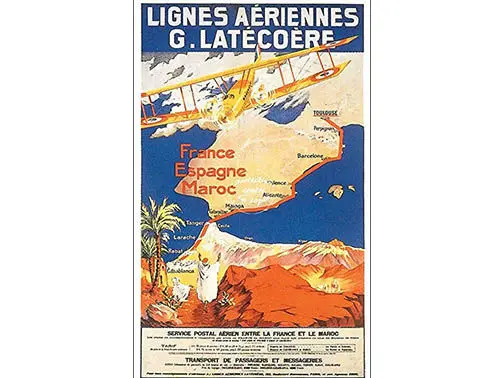
4. Stories to discover
Few people know that Carlos Gardel, famous Argentine tango singer, was actually born in Toulouse; or that Antoine de Saint-Exupery, aviator and author of the well-known book "The Little Prince" spent many nights in the city as a pilot of the Aéropostale General Company.
Also, Toulouse smells and tastes like violets. This flower arrived in the city around 1850, and acquired much fame throughout Europe. About 600 producers were dedicated to growing this delicate flower, which could be exported to other countries thanks to the airlines. However, it almost disappeared in the fifties, after a very hard winter and a severe crisis in this sector.
In 1985 the people started growing the flower again, and it remains one of the city’s hallmarks. Its perfume is highly appreciated, and in addition to the typical bouquets, violets are also used to make candies and other delicacies and even cosmetic products. A very curious visit recommended in this audioguide is to go to La Maison de la Violette (the House of the Violet), a boat moored at the Canal du Midi, to enjoy a violet tea or to buy products made from this flower.

5. The architectural heritage of the Pink City, from neighborhood to neighborhood
Classified by the government as a City of Art and History, Toulouse has a rich architectural heritage, mainly enclosed in the 220 hectares that defines its inner boulevard, and which constitutes the largest protected area in France.
Numerous religious monuments embellish the city, they are representative of the great variety of cults practiced by its population. Toulouse also has civil buildings of great beauty and importance, the most notable being the Capitole, which we will describe in the next section of this audioguide. If you walk around the city you will discover many charming streets, lively squares, and amazing facades.
In fact, it is better to visit all of its neighborhoods, since each one has its own personality. From Saint-Étienne, the chicest, to Les Carmes, the gourmet one, through Saint Cyprien which is the one that has most of the religious buildings. In them you can admire the almost two hundred Renaissance mansions that are the inheritance of the glastum, the plant that brought splendor to Toulouse. It is a vegetable from which a blue dye was extracted. With it, merchants of the fifteenth century enriched themselves. Today it is used for cosmetic products.
In addition, Toulouse has, not including the river banks and the canal, about 1000 hectares of nature distributed between 160 gardens and 600 green spaces. Particularly noteworthy are the Japanese Garden for its originality, and the entire complex of the Garden of Plants, the Grand-Rond and the Royal Garden, for their age. Pech David, La Ramée, Sesquières or les Argoulets parks, stand out for their size.
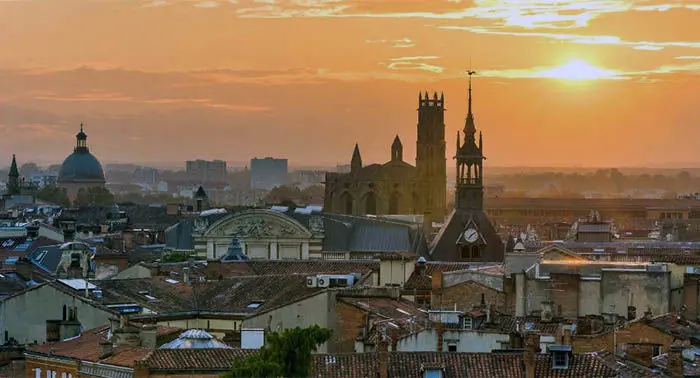
6. The Capitole
Go to Capitole Square with the audioguide and you will see that it is the most representative building in the Pink City. Built in the 18th century, behind its neoclassical facade it houses the City Hall headquarters and the National Theater.
The Capitole building is guarded by eight columns of pink marble that symbolize the number of councilors who represented each of the eight neighborhoods that were part of Toulouse in the eighteenth century. Beyond the central porch, we can access the courtyard of Henry IV.
On the first floor we will find the spectacular Hall of the Illustrious, a large gallery of mirrors and paintings. It is 60 meters long and 6 meters wide, and its ceilings rise 9 meters high. It is a little smaller than the gallery of mirrors of the Palace of Versailles, and it was inspired by the Farnese Gallery in Rome. All the artworks on this gallery were created by local artists, with the purpose of recounting the most important episodes of Toulouse history and paying tribute to the city’s most illustrious characters.
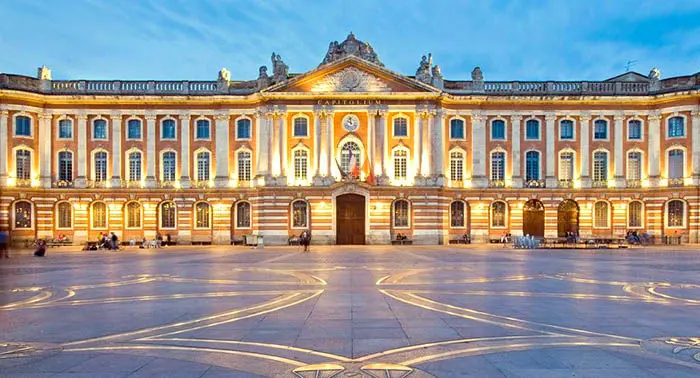
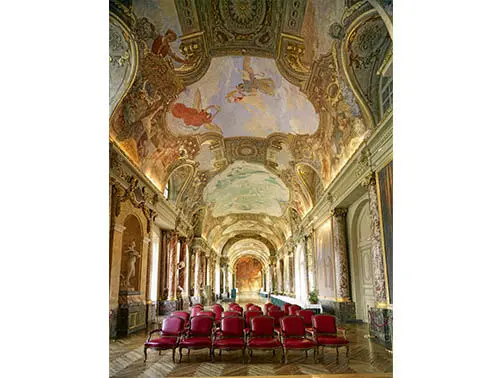
7. Capitole Square
This gigantic square is one of the most beautiful squares in France. This space that the audioguide allows us to discover now serves as an antechamber to the town hall and the Capitole Theater’s majestic buildings. Its center is decorated with the Occitania cross, the work of Raymond Moretti. Each of its twelve points is decorated with one of the zodiac signs.
It is a lively square where an event is always taking place: a market, a demonstration, the end of a race, the celebration of some triumph of the Toulousain rugby team... Its perimeter is surrounded by arcades where cafes and shops converge.
Under its arcades, colorful frescoes tell episodes of Toulouse history. You just have to look towards the arcade’s roof to see the paintings also made by Raymond Moretti in which we discover for example that Carlos Gardel was born in Toulouse or the relationship between aeronautics and the city. In one of Capitole Square’s corners is located the Grand Balcon hotel, where pilots of the Aéropostale company used to stay, the most famous of them is writer and aviator Antoine de Saint-Exupéry.
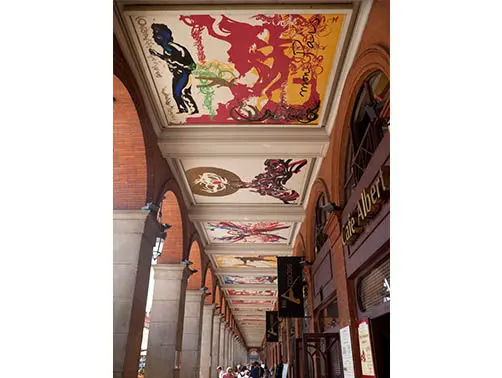
8. Saint Sernin Basilica
From the Capitole Square it is very easy to get to Saint Sernin Basilica with the audioguide. To do this, you can walk along the pedestrian street of Taur, where the tradition says that a bull dragged Saint Saturnin, the bishop and martyr who gave name to the Basilica, in the third century.
This building surprises us with its dimensions: just its central nave measures 115 meters. That is why it is considered the largest monument of Romanesque style in Western Europe. Built during the second half of the 11th century, Saint Sernin Basilica constitutes an important stage within the Camino de Santiago.
A consequence of the Edict of Milan, which in 313 gave Christians freedom of worship, was the building of a church in the fifth century to house the relics of the martyr Saint Saturnin, so far protected by a modest brick vault. But the growing influx of pilgrims made it necessary to build a new, wider church. That’s how in 1070, the first stone of the immense basilica that welcomes us now, was laid.
Declared a world heritage site by Unesco, it has a large octagonal bell tower. Inside, you can admire its huge vaulted nave and its crypt with numerous relics, because in addition to Saint Saturnin’s relics the basilica houses other saints’ remains. The visit would not be complete without looking closely at the more than 700 capitals located both inside and outside, from the crypt to the bell tower, half of which are from Roman times. The ascent to the south tribune, possible with a guided visit by the basilica volunteers, offers a magnificent view of the nave vaults and also allows you to appreciate how the stands are authentic interior buttresses.
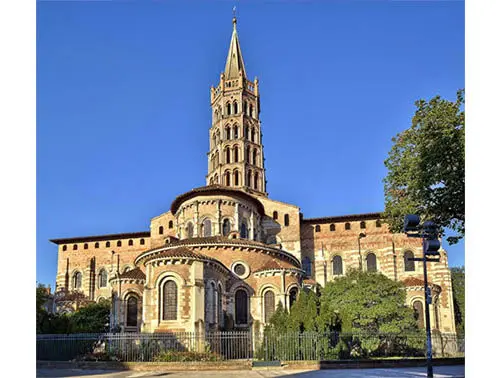
9. Convent of the Jacobins
Near Saint Sernin basilica, about ten minutes’ walk, is the convent of the Jacobins, a magnificent example of monastic construction. This set, a jewel of medieval Gothic art, was erected in the thirteenth and fourteenth centuries by the Dominican friars.
Do you know why, in the twelfth and thirteenth centuries, the new religious orders decided to break the tradition of erecting isolated monasteries in the middle of the countryside? Specifically, The Order of Preachers helped to structure the urbanization by building their houses in the heart of the cities. In this way, they were in direct contact with the faithful, allowing them to preach their faith and live on charity.
Dominic de Guzmán founded the Order of Preachers in 1216 in Toulouse, to fight against Catharism, a heretical religious movement that had great importance in the southwest of France.
The convent’s interior houses the cloister, a true haven of peace; the chapter room, where the Preachers met; the refectory, which now hosts temporary exhibitions. In its double nave church with painted decoration and magnificent stained-glass windows, under the altar, we find Saint Thomas Aquinas relics.
But there’s no doubt the most striking element of the building, which will surely impress you, is its magnificent palm-shaped vault, with its 22 ribs that support the polygonal choir.
And, if you are a good observer, you can find some fun sculptures inside the church: hands, feet, a frog, a mouse, and several prankster characters that hide at the foot of some columns. Open your eyes wide while listening to the audioguide!
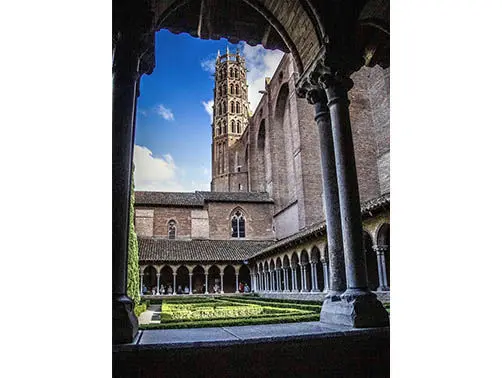
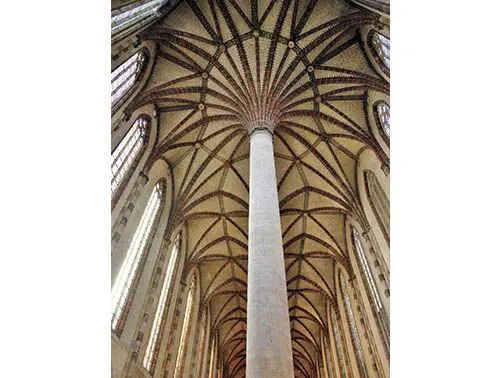
10. Basilica of Our Lady the Daurade
On the way to the Garonne river, with the audioguide we find the Basilica of Our Lady of the Daurade. Also called Basilica of Our Lady the Black, it is dedicated to a black Madonna, protector of the city and future moms. This statuette can brag about being the best dressed lady in Toulouse, as well-known dressmakers such as Yves Saint-Laurent, Christian Lacroix or Jean-Charles de Castelbajac have designed her mantles.
Built in the 5th century, it is probably France’s oldest sanctuary dedicated to the Virgin Mary. An ancient pagan temple was then turned into a church and decorated with mosaics made of gold leaf, which gave it its name of "golden". In the seventh century, Benedictine monks settled in this church, giving it a new nave and a cloister, where the School of Fine Arts is located today. With the passage of time the church structure aged, so at the end of the 18th century it had to be torn down and rebuilt. A century later Pope Pius IX made it a Basilica.
Currently, the interior is only accessible during mass hours, but you can admire its beautiful facade and try to find the bell tower, which at first glance seems absent. Can you see it?
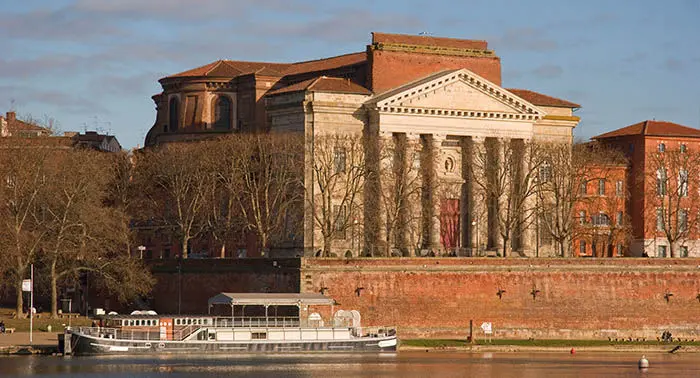
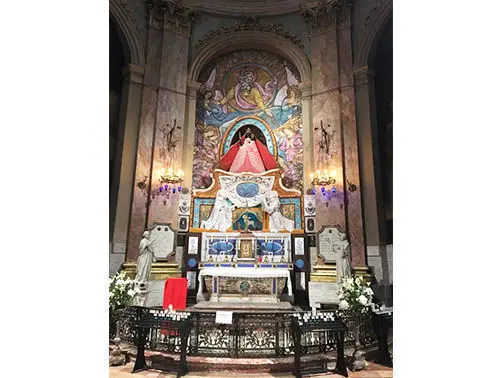
11. The Assézat Mansion
Before crossing the Old Bridge over the Garonne to go with the audioguide to the popular neighborhood of Saint Cyprien, it is advisable to visit the Assézat Mansion. It is located on Metz Street, which was the ancient Roman decumanus, that is, the main street with east-west orientation in Roman cities. This 16th century palace was built by Nicolas Bachelier, a great architect from the Renaissance. Its owner was Pierre d’Assézat, who made a fortune in the textile industry thanks to the glastum, a plant that was used to dye the fabrics blue and was very popular throughout the old Midi Pyrénées region. In general, in the Renaissance, the entire city of Toulouse was enriched by glastum trade, which boosted the construction of beautiful palaces, among which is the Assézat Mansion.
The majestic central courtyard serves as a framework for two facades linked by the “stair tower”. A simple look at its imposing facade demonstrates the desire to decorate the building with sophisticated and wise ornaments, with numerous details that show its owner’s culture and refinement. The building was donated to the city of Toulouse in 1895. Today it is home to notable academies and scientific societies, among which is Europe’s oldest literary society: The Academy of Floral Games, dating from 1323. You can learn more about this academy in the next stop of our audioguide.
It also houses the Bemberg Foundation since 1995, created by Argentinian patron Georges Bemberg to bring its outstanding works of art to the public. Among the more than 1,100 works on display, Pierre Bonnard's paintings find a privileged place, in addition to other artists such as Degas, Gauguin, Modigliani, Toulouse-Lautrec, Monet, Veronese, Tintoretto, Canaletto and Cranach.
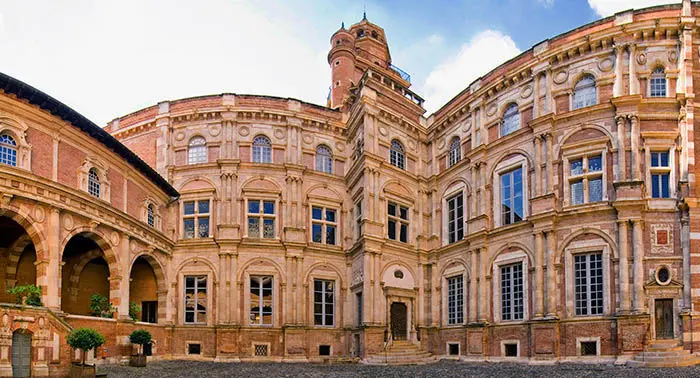
12. The Academy of the Floral Games
The Academy of the Floral Games is a literary society founded in 1694 by Louis XIV King of France. But its origin is even older, it is said that in 1323, a group of rich Toulousain bourgeois, worried about reestablishing a certain lyricism after the 13th century crusades against the Albigensians (or Cathars) and organized a literary contest that would reward the best troubadour with a violet covered with a thin layer of gold. It owes its name to the Floral Games parties celebrated in Rome in honor of the nymph Flora.
During some competitions that take place every year, the Academy members, called “maintainers”, reward the authors of the best poems in French and Occitan, a Romance language spoken in the South of France. These rewards are shaped like flowers such as violets, eglantines, marigolds, amaranths and lilies made from gold or silver. The person who gets 3 of these flowers, receives the “game master” title.
Among the most famous game masters are Chateaubriand, Voltaire, Fabre d'Églantine, Alfred de Vigny, Victor Hugo, Frédéric Mistral, Carmen Sylva and Marie Noël, among others.
Since 1894, the Academy meets every May 3 in the Hall of the Illustrious of Assézat Mansion to give the literary prizes. Then, a mass is celebrated in the Basilica of the Daurade to bless the contest’s flowers before being awarded to the winners. You can learn more about these 3 places in this audioguide.
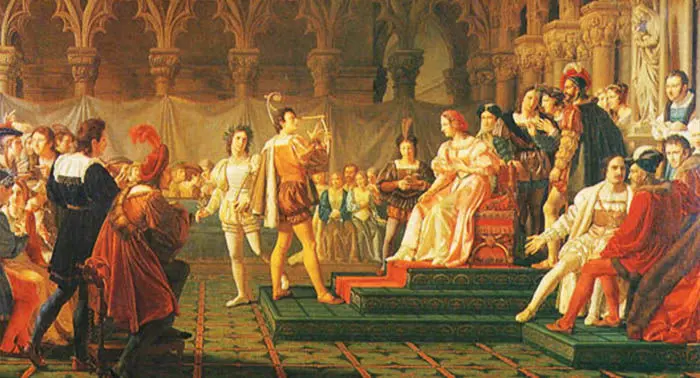
13. The banks of the Garonne River
One of the most beautiful city landscapes, besides being a very pleasant walk during which to listen to the audioguide, is without a doubt the Garonne river and its banks and bridges.
We can, for example, tour the Henri-Martin promenade and the Daurade square and enjoy the sun and nature in the city’s heart.
Toulouse’s most characteristic view is the Stone Bridge next to the old pilgrims’ hospital, called Hotel Dieu Saint-Jacques. Another image that will delight our eyes can be seen in Raymond VI’s Gardens, from this location, you will enjoy the most beautiful views of the Garonne as it goes through the Pink City, in addition to glimpsing the three most important bridges in Toulouse: the New Bridge, the Stone Bridge and the Catalans Bridge.
In the Saint Cyprien neighborhood, several exhibition centers are located on both sides of the river, such as the Bazacle, the Chateau d’eau or the former municipal slaughterhouse (les abattoirs). The latter is especially recommended by this audioguide as it is now the city’s Modern Art Museum, and is famous for hosting "The Remains of Minotaur in a harlequin Costume" by Picasso.
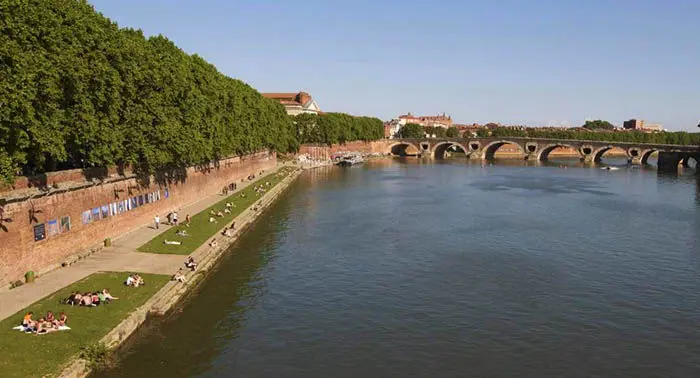
14. The Canal du Midi
In addition to the Garonne river, several canals of great tourist interest run through the city; the Canal du Midi, the Canal de Brienne and the Garonne Canal. With a total length of 240 kilometers, the Canal du Midi is inscribed as a Unesco world heritage site. It was built in the seventeenth century under Louis XIV reign by the architect Pierre-Paul Riquet. The original goal was to create a waterway that linked Toulouse to the Mediterranean Sea, so it would allow the city to leave its commercial isolation. It was subsequently completed in the 19th century by the Garonne Canal to navigate to the Atlantic. The canal was a primary way to transport goods until the train’s arrival in the 19th century.
All these routes can be seen on foot, by bike, and even by boat using the audioguide. In summer it is marvelous to enjoy the water’s calm and freshness and its malls of plane trees, which were planted in 1860 to give consistency to the banks.
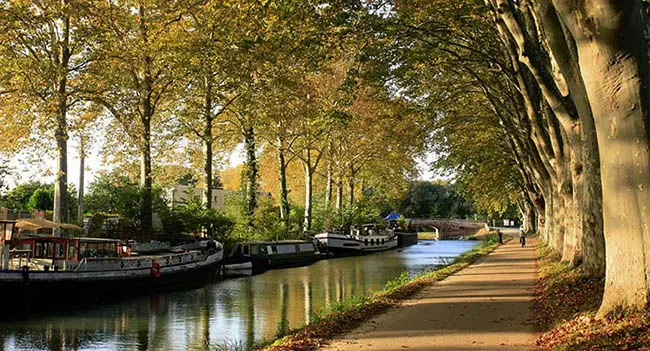
15. Toulouse markets, meeting places
Many markets contribute to Toulouse’s lively, street atmosphere, which many of its inhabitants and tourists visit. One of the most famous is the Victor Hugo market, in the square of the same name, where some of the most recognized producers in the region are located.
The current building that houses this market and that you can discover with the audioguide was built in 1969. It has the particularity of hosting a series of restaurants on the top floor where they serve food prepared with ingredients sold in the market.
A few steps away from it, on the Strasbourg Boulevard, is the Crystal market, where fruits and vegetables are sold outdoors.
Another known market is that of Carmes, located behind Esquirol Square, at the end of Filatiers Street. Along this way is the house of Jean Calas, a Protestant merchant accused of killing his son to prevent him from converting to Catholicism, and executed in St. George's Square in 1762.
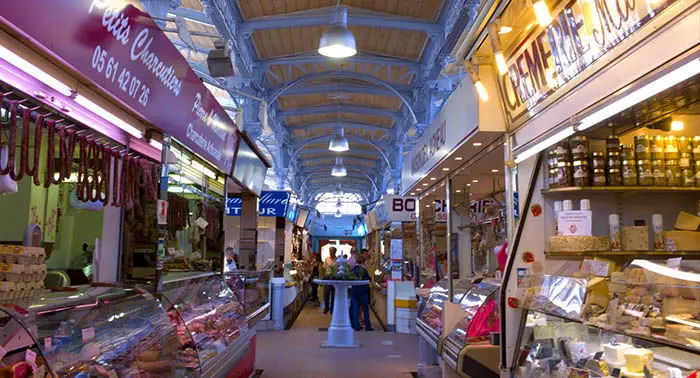
16. Montaudran rebirth: Toulouse Aerospace
Montaudran district, cradle of Toulouse’s aviation, was chosen in 2014 to install an urban art space - the Fifty-Five. The abandoned industrial facilities where the Latécoère aircraft used to be manufactured, today are the exhibition place for artists during numerous festivals.
Toulouse Aerospace is the name of a future design district of 56 hectares where it will be possible to live, work and enjoy leisure time, but it will also be a leading activity and research center dedicated to aeronautics, space and on-board systems thanks to Innovation Campus. To commemorate the centenary of the Aéropostale company’s first flight, the Toulouse Aerospace consortium has inaugurated the Giant’s Runway, an unprecedented cultural place divided into three spaces. In this audioguide we will go through each one of them:
The first one, the Hall of the Machines, is a large contemporary 6,000 m² space opened in 2018, which houses 150 mechanical machines designed by François Delarozière. All year long, visitors can admire how these machines move thanks to the talent of their operators. Can you imagine sitting at a table and having a machine serve the water or a catapult throwing bread accurately? Or even get into a 14 meter high articulated minotaur that travels through the historic aviation runway?
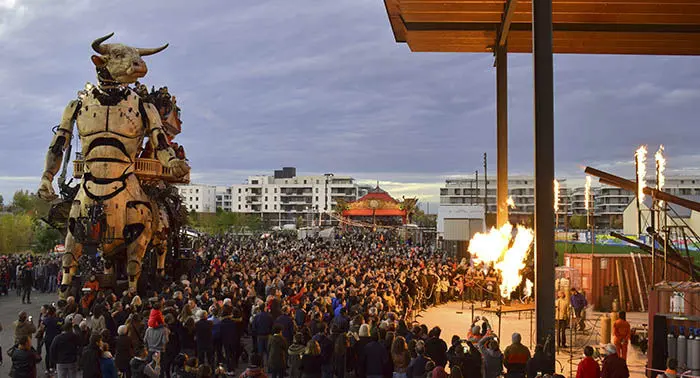
The second one, the Memory Aero area, is a space dedicated to remembering the pioneers of the Latécoère and Aéropostale lines as well as the Montaudran neighborhood. A permanent exhibition of 1,000 m² immerses us in the adventure of the pioneers and offers us a historical exploration of the place.
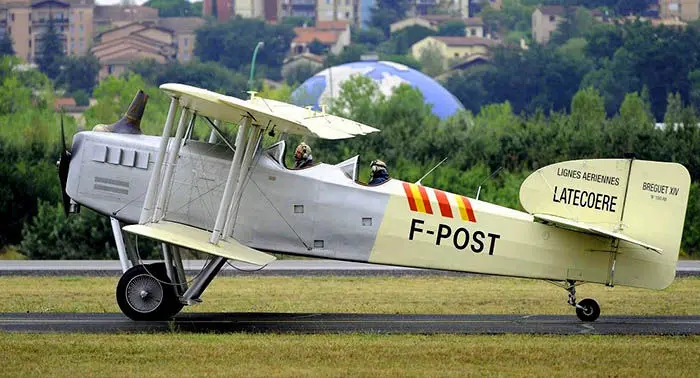
Finally, The Airline Gardens are located next to the old Aeropostale runway. Its 2 hectares recreate different environments of the three continents through which the aviators of this airline traveled. It is a way to relive the adventure of the aeronautics pioneers with eight different landscapes and ecosystems without leaving Toulouse: Spain, Morocco, Mauritania, Senegal, Brazil, Uruguay, Argentina and Chile.
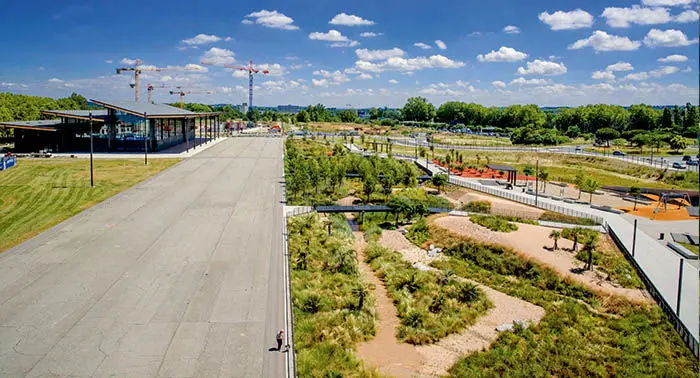
17. The City of Space
Now, our audioguide will take us beyond the sky, to the edge of the universe! You are now discovering the City of Space, the main theme park dedicated to space adventure. Opened in 1997, it is the place to feel like an astronaut aboard the Ariane 5 rocket or the Soyuz spacecraft. A planetarium with 140 seats and another with 280 seats offer shows throughout the day. In addition to the interactive exhibition halls, the museum has a space specially dedicated to the little ones, "the children's base". Children and adults can become experts on the Earth and the Universe, learn about aerospace flights, and even predict the weather. In 2019, an event was celebrated to commemorate the 50-year anniversary of the first moon landing, when Astronaut Armstrong said: 'one small step for man, one giant leap for mankind' Enjoy Toulouse!!!!!
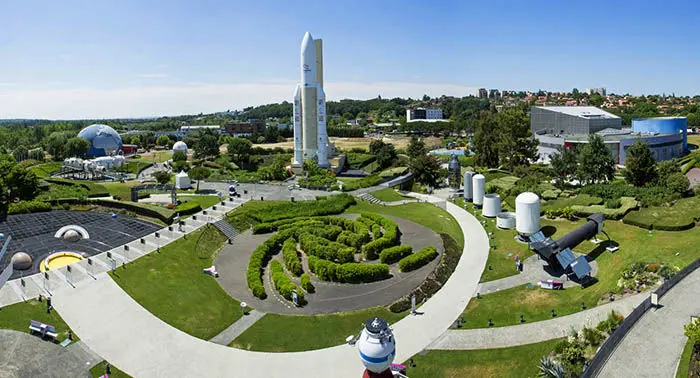
Audio guide devices, Multimedia audio guides,
Audio guide GPS tourist bus-train, charging bases and accessories.
Group guidance systems, headsets, charging cases, tour guide systems accessories.
Audioguides available from mobile devices, web App, downloadable App from Google Store.
Audioguides in several languages, translations, voiceovers. Audio descriptions, signoguides, visual contents for audioguides. 3D Reality.